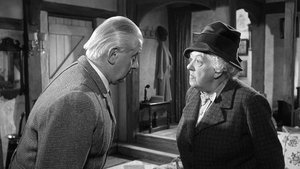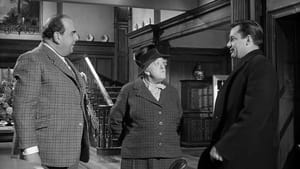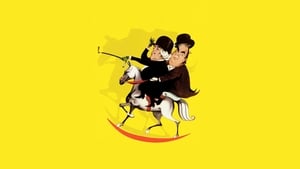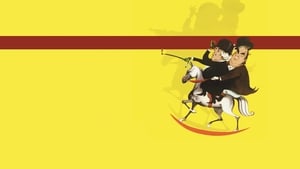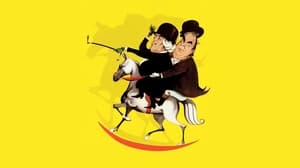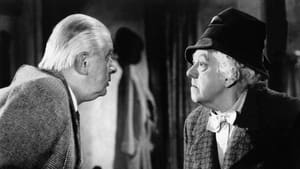Video Sources 0 Views
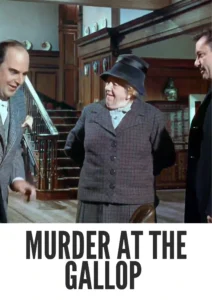
Synopsis

Get ready for a delightful dose of mystery and charm with Murder at the Gallop, a classic British cozy mystery from 1963, now beautifully colorized for an enhanced viewing experience. Starring the incomparable Margaret Rutherford as the iconic Miss Marple, this film, directed by George Pollock, is a perfect blend of suspense, humor, and clever sleuthing set against the backdrop of a quaint village and a spirited horse-riding school. Ideal for fans of classic whodunits and those who appreciate a touch of British wit, this HD download brings a beloved Agatha Christie adaptation to life like never before.
Murder at the Gallop finds Miss Jane Marple investigating the suspicious death of Mr. Enderby, a wealthy and eccentric horse enthusiast. Initially, his demise is attributed to a heart attack, but Miss Marple suspects foul play when she discovers subtle clues suggesting he was poisoned.
Intrigued, Miss Marple, along with her loyal companion Mr. Stringer (Stringer Davis), embarks on a quest to uncover the truth. Their investigation leads them to a horse-riding school run by the charming but secretive Hector Enderby (Robert Morley), the nephew of the deceased.
As Miss Marple delves deeper into the case, she encounters a cast of colorful characters, each with their own motives and secrets. The investigation takes numerous twists and turns as she navigates a web of family rivalries, hidden fortunes, and suspicious accidents. With her keen observation skills and sharp intellect, Miss Marple pieces together the clues, ultimately exposing the cunning killer and solving the perplexing mystery.
The film showcases a stellar cast of actors who bring this captivating story to life:
-
Margaret Rutherford as Miss Jane Marple
-
Robert Morley as Hector Enderby
-
Flora Robson as Miss Milchrest
-
Stringer Davis as Mr. Stringer
-
Greta Gynt as Gladys
Murder at the Gallop falls into the genre of cozy mystery, offering a lighthearted and engaging whodunit with a focus on character development and clever plot twists. Its charming setting and witty dialogue make it a delightful and entertaining film.
Released in 1963, Murder at the Gallop is part of a series of films featuring Margaret Rutherford as Miss Marple, based on the novels by Agatha Christie. Rutherford’s portrayal of Miss Marple is iconic, bringing a unique blend of wit, charm, and determination to the beloved character. The film was produced during a period when British cinema was gaining international recognition for its quality productions and memorable performances.
This colorized version of Murder at the Gallop has been meticulously restored using modern digital techniques, enhancing the visual appeal while preserving the film’s original charm and atmosphere. The colorization process involved carefully analyzing the grayscale tones of the original black and white footage and assigning appropriate colors to each scene. While the specific software used remains proprietary, the techniques employed included advanced algorithms for color palette selection and image enhancement. This painstaking process brings new life to the characters and settings, making the story even more engaging for modern audiences. While some may debate the merits of colorizing classic films, it introduces these films to a broader audience, ensuring their legacy for future generations.
-
: George Pollock
-
: James P. Cavanaugh, David Pursall, Jack Seddon (novel by Agatha Christie)
-
: Arthur Ibbetson
-
: Ernest Hosler
-
: Metro-Goldwyn-Mayer
-
: Metro-Goldwyn-Mayer
-
: 81 minutes
-
: MP4
-
: HD (1080p)
-
: Compatible with most devices, including smartphones, tablets, computers, and smart TVs.
Murder at the Gallop (1963) is celebrated for its witty script, charming performances, and engaging mystery. Margaret Rutherford’s portrayal of Miss Marple is particularly praised, making it a beloved adaptation of Agatha Christie’s work. As a delightful and entertaining film, Murder at the Gallop continues to captivate audiences with its classic charm.
-
: What is Murder at the Gallop about?
-
A: Murder at the Gallop is a cozy mystery about Miss Marple investigating the suspicious death of a wealthy man at a horse-riding school.
-
-
: Is Murder at the Gallop (1963) a well-known film?
-
A: Murder at the Gallop is a well-regarded adaptation of Agatha Christie’s novels, known for Margaret Rutherford’s iconic portrayal of Miss Marple.
-
-
: Is this version of Murder at the Gallop colorized?
-
A: Yes, this version has been professionally colorized to enhance the viewing experience.
-
-
: What makes Murder at the Gallop interesting for classic film fans?
-
A: Murder at the Gallop offers a delightful blend of British humor, engaging mystery, and memorable characters, making it a classic of the genre.
-
-
: What is the download format?
-
A: The download format is MP4, which is compatible with most devices.
-
-
: What resolution is the download?
-
A: The resolution is HD (1080p), providing a high-quality viewing experience.
-
Watch Murder at the Gallop Today!
